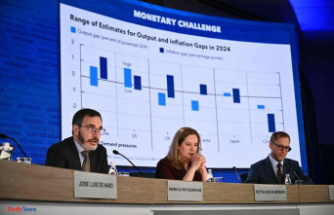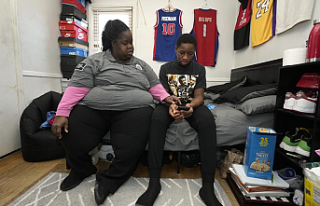According to the November jobless rate drop of 4.2%, this indicates that more people have found work in December. Despite the modest hiring increase reported by businesses, 651,000 workers claimed they were employed in December, as compared to November.
The Labor Department reported Friday's data, which showed the state of the labor market in December before the spike in COVID-19 infection began to disrupt the economy. Economists warn that job growth could slow in January or February due to omicron cases. These have caused millions of infected workers from returning home to quarantine. The economy still has 3.6 million fewer jobs than it did before the pandemic.
At the moment, steady hiring is driven by strong consumer demand which has remained resilient in spite of chronic supply shortages. The economy is likely to see a strong annual growth rate of around 7% due to increased consumer spending and equipment purchases by businesses in the last three months of 2021. According to the Conference Board in December, Americans were more optimistic about the economy, which suggests that spending was likely healthy for most of the month.
In December, wages rose sharply with the average hourly wage jumping 4.7% in comparison to a year ago. This is an indication that companies are fiercely competing to fill open jobs. Pay raises are being driven by a record-breaking wave of workers quitting as they seek better jobs.
However, low unemployment and rapid wage growth could increase inflation, as companies raise prices in order to pay rising labor costs. The Federal Reserve has made a drastic shift from maintaining low rates to support hiring to raising rates to combat inflation. Price increases have already risen to a four-decade record. The Fed is expected to increase its benchmark short-term rate (currently near zero) in March, and possibly two to three more times this year, according to most economists.
According to Renaissance Macro Research economist Neil Dutta: "Companies are paying more for workers." This is consistent with inflation that is well above 2% which keeps the Fed under pressure to raise interest rates.
Patrick Freeman is a custodian in a Hickory furniture factory. He is one of the many people who have benefited from the fierce competition for workers. After two years of working as a temp, Freeman was offered a permanent job in November. Freeman received the good news in a time when many of the other employees had found new jobs, leaving the company with fewer workers.
He said that his co-workers had "spread out" and was referring to them. They're very short in many areas. "I'm staying put."
Freeman was hired permanently and saw his hourly pay increase from $12 to $16. After a 60-day probation, Freeman will be eligible for vision, health, and dental benefits. He is also eligible to participate in the company's stock ownership program.
Becky Frankiewicz is the president of ManpowerGroup North America. She stated that many clients of Manpower are changing employees from temporary status to permanent because they have a shortage of workers and want to "lock them up."
Frankiewicz stated that Manpower calculated that absenteism has tripled since 2021 because of omicron. She said that there has been no slowdown in the demand for workers.
However, the omicron variant will have a significant impact on the economy in general. It has caused millions to become sick and forced thousands of airlines to cancel flights. There was also reduced traffic at bars and restaurants. Some schools were closed. This could affect job growth and leave some parents unable to work.
This could make it harder for businesses to keep their staff full and could also slow down the economy. Capital Economics economist Michael Pearce says that many workers will be in quarantine at home next week. The government won't count the jobs of those who aren’t paid -- approximately one-fifth the U.S. workforce doesn’t have sick leave -- This would reduce the January employment gain reported to businesses.
Omicron has caused so many employees to call in sick that it is disrupting businesses such as ski resorts, airlines, and hospitals. Alaska Airlines announced that it will cut 10% of its flights in January due to an "unprecedented number" of employees calling in sick.
Restaurant and bar jobs are likely to be affected by the wave of infection. According to OpenTable, the number of Americans who are willing to eat in restaurants began to decline in December. Based on OpenTable data, restaurant traffic had dropped to 25% by December 30, after being close to pre-pandemic levels in November.
Economists believe that the economic impact of omicron will be temporary, despite it being less potent than other COVID-19 variants. Also, few states and localities have taken steps to restrict business operations.
Omicron may have had an impact on December's data. The 199,000 jobs added were well below what economists expected. The category that includes bars, restaurants, hotels, and casinos saw just 53,000 new jobs, a drop from the hundreds of thousands per month added earlier in the year.
Even with December's modest gain in 2021, it was one of America's best years in decades. However, this year came after 2020, which was the worst year for American workers since records began in 1939. This was a result of the pandemic recession. Last year, companies posted record numbers of jobs and offered higher wages to keep their workers.
In 2021, the number of jobs grew 4.5%, which was the biggest such increase since 1978. This is partly due to a rebound from 2020's steep losses, which saw the nation lose 6.2% of its jobs.
Many companies are not ignoring the omicron wave, and they continue to add workers. Angie Podolak is the director of human capital for Beneficial State Bank, based in Oakland. She said that the bank, which has about 195 employees, is experiencing strong growth in auto lending. The bank is currently looking to fill 12 positions.
Podolak stated that although some bank employees have been called in sick, the bank has not had to cut hours or lose customers due to omicron. It has not had to slow down its recruitment efforts. Beneficial conducts video interviews for job candidates.
"It's just business as usual for me," Podolak stated. "I'm just relying on the wood for now and crossing my fingers. However, we have not seen any significant changes in our recruiting."
In the aftermath of the pandemic, the government's survey on company payrolls has become more volatile. One month's data is often followed by a dramatically different trend a few months later. For example, Friday's November job gain of 210,000 was increased to 249,000 and October's increase, initially reported at 531,000 was raised to a solid 648,000.
The December report also shows a divergence between two surveys that are conducted each month by the government. A survey of households is used to calculate the unemployment rate. This survey showed that 651,000 people were more employed than last month. The payroll survey is a separate survey that surveyed employers and found only 199,000 additional jobs.
Although the surveys are generally similar over time, the results can be very different in any given month.












